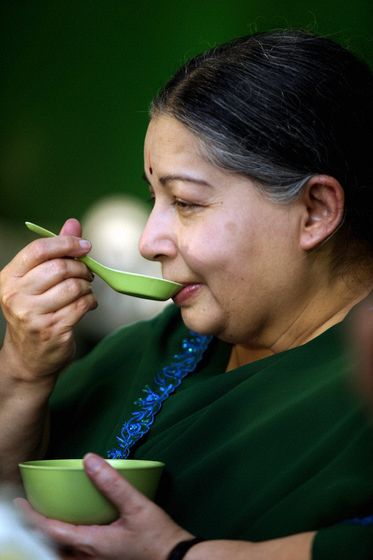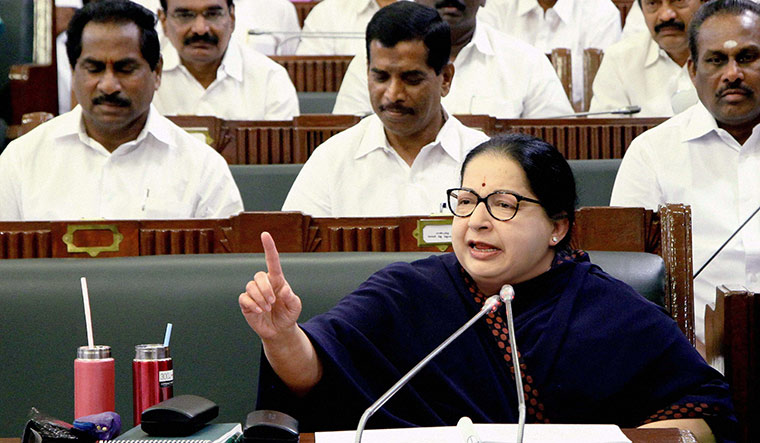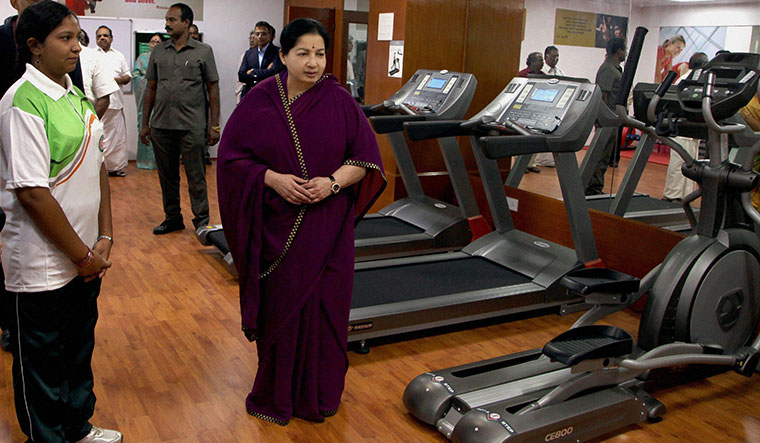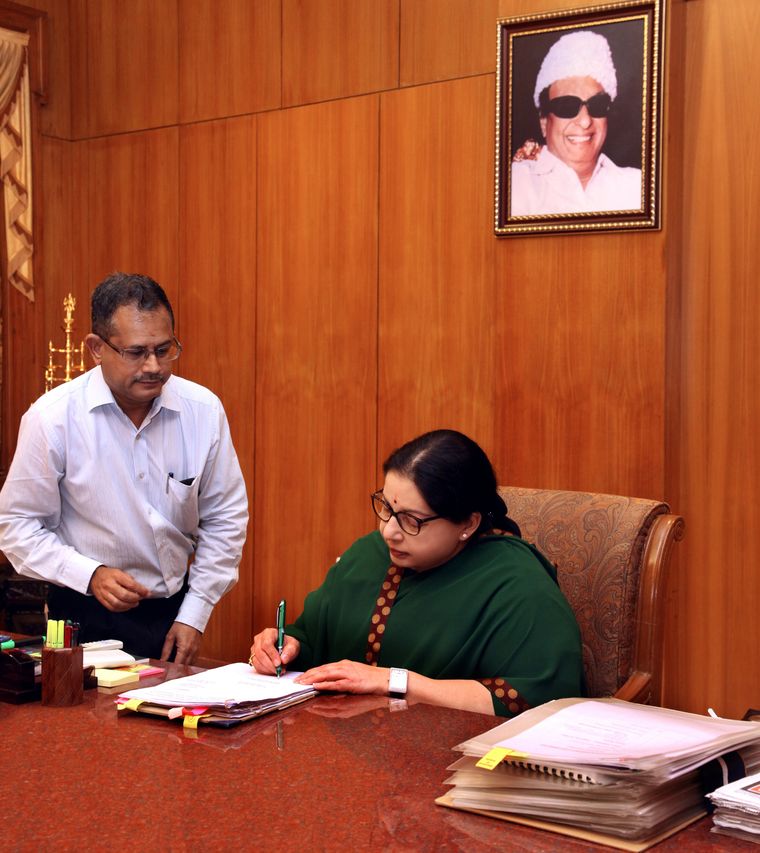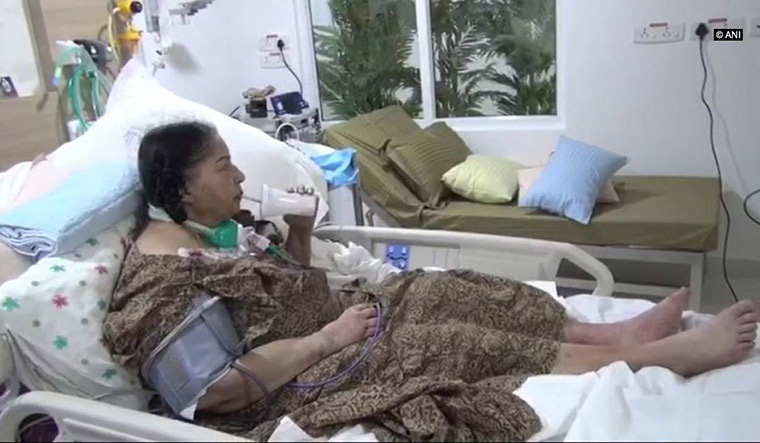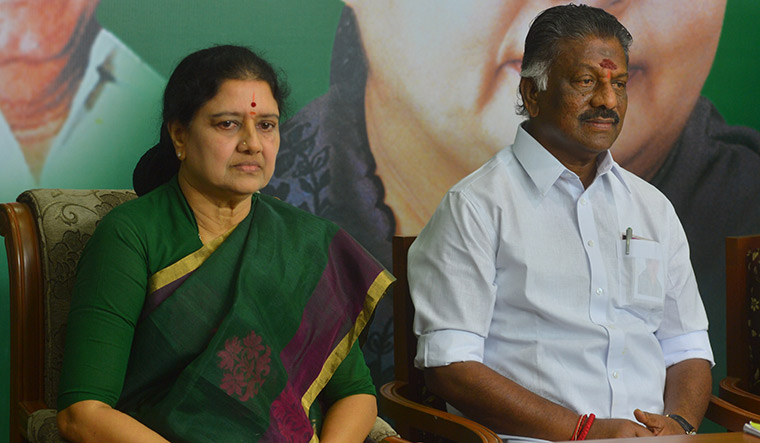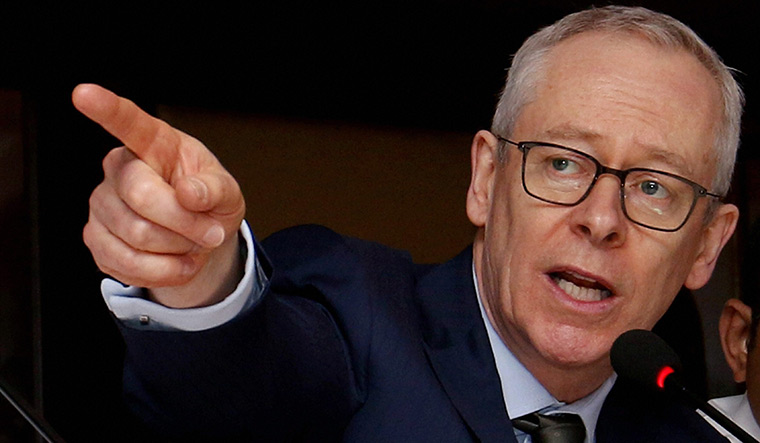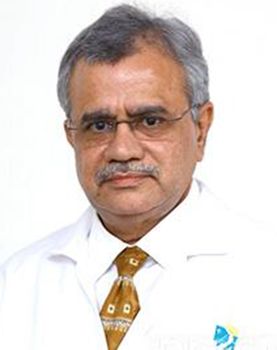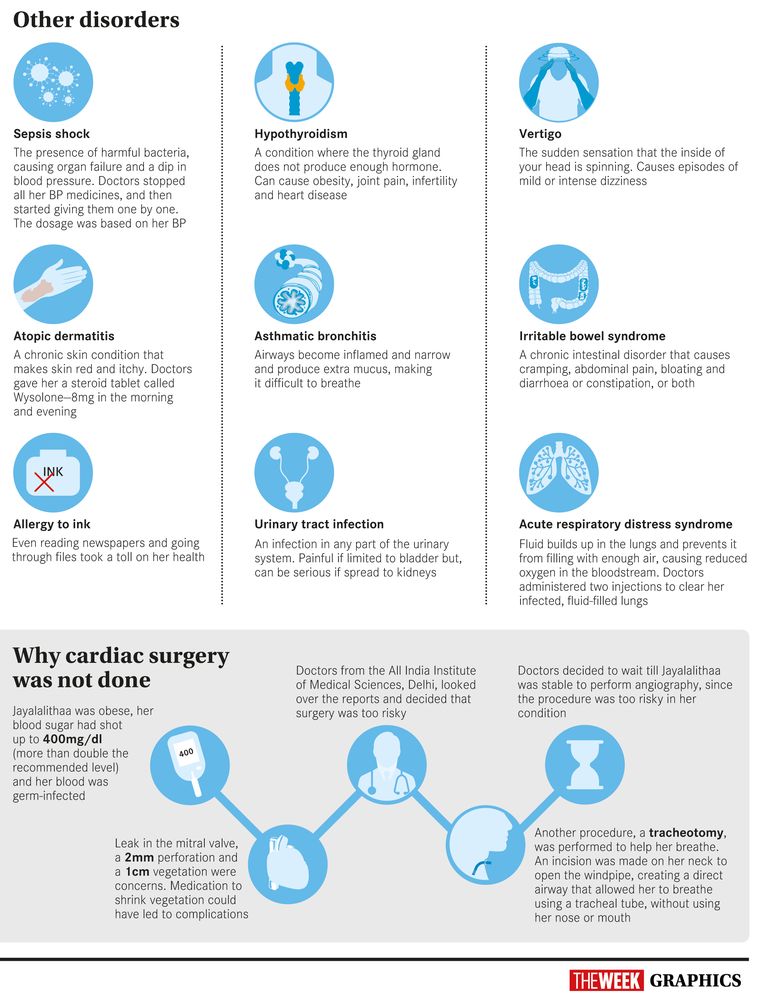A person’s sense of humour is often the first casualty of an illness. But J. Jayalalithaa never lost hers, even as her maladies left her gasping for air. On September 27, 2016, barely a week after she was rushed to Apollo Hospitals in Chennai, she cracked a joke about her wheezy breathing. “She quipped that it sounded like someone sitting in the front row of a movie theatre, whistling at the screen,” recalled Dr K.S. Shivakumar, her longtime doctor.
Jayalalithaa’s final weeks had all the drama of a potboiler, befitting the actor-turned-politician that she was. The illnesses that plagued the Tamil Nadu chief minister were sundry. She had been suffering from vertigo for 15 years, had been obese and diabetic for more than 20 years, and had chronic heart, respiratory and digestive disorders, thyroid- and nerve-related problems, and a skin condition for which she took steroids.
Jayalalithaa was hardly conscious for most of the 74 days she was in Apollo Hospitals, Chennai. But when she was, she insisted on running the show. Dr Richard Beale, the London-based intensive care expert who flew in to help treat her, got a taste of it when he met her in October 2016. Beale visited her after meeting the team of Apollo doctors who were treating her. Shivakumar had told him that Amma, as Jayalalithaa was popularly known, was not sticking to her treatment regimen.
According to Shivakumar, who was in the room, Beale told Jayalalithaa: “You might be the boss of this whole state, but I am the boss of this hospital. You should listen to what I say.” Jayalalithaa, who was unable to speak because of her respiratory illness, replied through gestures. “You are not the boss,” she gestured. “I am the boss.”
Having sent the message, Jayalalithaa took Beale’s advice. “We talked about many things—what she likes to watch on TV, rehab, etc.,” he said in a media conference held weeks after she died. “She couldn’t speak clearly, but she could mouth, and I could understand very well. She was cooperating really well.”
After coming out of Jayalalithaa’s room, Beale told the Apollo team that he had asked her to consider going abroad for treatment. “[Before going in] Beale had not discussed this option with us,” said Dr Babu Kuruvilla Abraham, critical care consultant at Apollo. “We came to know about their talk only after Beale came out of her room.”
According to Abraham, Beale told him: “Very strong-willed lady. I could not persuade her to shift abroad.”
Perhaps, Jayalalithaa was influenced by what had happened to M.G. Ramachandran, former chief minister and her political mentor, who was admitted to Apollo Hospitals in October 1984 after a kidney failure. “MGR was taken to New York for treatment,” recalled Dr R. Girinath, cardiothoracic surgeon who was part of the teams that treated MGR in 1984 and Jayalalithaa in 2016. “When he was taken from [Apollo] hospital, he had not lost consciousness.” MGR returned without fully recovering from his illness, and had to spent the last two years of his life shuttling between Chennai and New York for treatment. He died in 1987.
Jayalalithaa died on December 5, 2016, after she suffered a cardiac arrest. She was 68. As the details regarding her treatment were kept under wraps, rumours began to spread that she was not given proper medical care, and that many of the interventions had ended up worsening her condition.
In a bid to dispel the rumours, a team of doctors, including Beale and Abraham, held a media conference in Chennai on February 6, 2017. Beale said everything that could be done to save her “was done exceptionally well” at Apollo.
On September 25, 2017, the Tamil Nadu government constituted a commission headed by A. Arumughaswamy, retired judge of the Madras High Court, to inquire into Jayalalithaa’s death. The commission was initially given three months to submit its report, but was later granted extensions four times. The final deadline is on June 24.
Even as the Arumughaswamy commission is wrapping up its proceedings, the rumours surrounding Jayalalithaa’s death refuse to go away. The absence of a detailed account of her treatment has only kept them afloat, even though there is no evidence supporting allegations that she was mistreated.
THE WEEK accessed confidential documents—including statements made by Jayalalithaa’s doctors before the commission, testimonies of consultant specialists who monitored her progress, and a treatment summary by Apollo Hospitals—to piece together a comprehensive account of her final weeks. This is the untold story of the long, complex battle to save Jayalalithaa’s life, and how and why it ultimately failed.
SWEET TOOTH, BITTER HEART
Jayalalithaa loved ice cream. And grapes, bananas, cakes and sweets. To fight fatigue, she often consumed an energy drink called Revive, which caused her blood sugar to spike. “She used to have ice cream even in the night,” Shivakumar told the commission. She had sweets even when the Apollo team was struggling to stabilise her. “Amma did not have control over her food intake, though she knew she had to exercise control.”
Shivakumar, 50, had been Jayalalithaa’s primary medical consultant since 1998. His wife is the niece of V.K. Sasikala, Jayalalithaa’s close confidante. “I would advise Amma on which doctor to consult, talk to the doctor, and organise the treatment,” he said.
Shivakumar lives 20km from Jayalalithaa’s Poes Garden residence. He was always on call and knew her routine to a T. “Every morning, she would test her blood-sugar level using a glucometer,” he told the commission. “She began her day by drinking water boiled with lotus petals. Normally, she would have breakfast at 7:15am, lunch before 11:30am, dinner between 6pm and 7pm. At 11:30pm, before going to bed, she would repeat the blood test and note it in her diary.”
To ascertain the nature of her diet, the commission took note of her diary entry for August 19, 2015. That day, she woke up at 6am, checked her weight (102kg) and fasting blood sugar level (150 milligrams per decilitre, against the recommended 80 to 130mg/dL). For breakfast, she had two idlis, two slices of bread and 150ml cups of tea and coffee. Two cups of rice for brunch. Poriyal (sautéed vegetables) and curd rice for lunch, topped with two cups of green tea and four biscuits. A vegetable puff, a piece of cake and 200ml green tea at teatime, and three slices of wheat bread and 200ml milk for dinner. She recorded a blood-sugar level of 175mg/dL at midnight, and 140mg/dL the next morning.
According to Shivakumar, Jayalalithaa’s health had been steady since 2001. “Her sugar levels alone varied,” he said. “She was treated for thyroid problems (hypothyroidism), and though there were certain other anomalies, her health was fine.”
That changed in 2014, after a special court in Karnataka convicted her of amassing assets disproportionate to her known income. “There was a change in her thyroid level and her health,” he said. “Her walk became slower, as she felt increasingly giddy because of vertigo.” She began consulting a neurologist, an ENT specialist and an ophthalmologist, and was treated for a “nerve-related problem”.
She continued to have sweets and fruits. “Malai vazhaipazham [hill banana, which she liked] increases blood-sugar and potassium levels. Generally, if the latter goes up, there is a risk of death. But her level remained within safe range,” said Shivakumar.
On June 23, 2015, a month after the Karnataka High Court set aside her conviction in the disproportionate assets case, Jayalalithaa took an echocardiogram. It showed that she had grade-1 diastolic dysfunction (the first of four rungs in the dysfunction ladder), and that the mitral valve in her heart was not functioning properly. Worse, there was ‘vegetation’ in the mitral valve—an infected mass caused by bacterial growth, so named because of its similarity to natural vegetation. A surgery, however, was ruled out, apparently because of her high blood sugar.
She also underwent a scan to trace the cause of her vertigo. By May 2016, when Jayalalithaa was reelected as chief minister, several of her ailments had turned severe. The most visible among them was atopic dermatitis, a chronic skin condition that would occasionally flare up, making her skin red and itchy. “[Because of her ill health] the swearing-in ceremony was short,” recalled Shivakumar. “By the first week of September, her skin condition worsened. On the advice of the specialists who treated Amma, she was given a steroid tablet called Wysolone—8mg in the morning and 8mg in the evening. The dosage was later reduced step by step. She would have taken this tablet for about 15 days.”
Jayalalithaa took care to wear clothes that hid her condition; hence, those distinctive long-sleeved blouses and saris swaddling her torso. She was allergic to ink, so her habit of reading newspapers and going through files took a toll on her health. When the allergy flared up, she would take photos of the affected area and send it to Shivakumar, who would then forward it to skin specialists. “She was given medication for rashes on her thighs and back. She had a cyst on her calf, which was also treated,” said Shivakumar.
Concerned about Jayalalithaa’s wellbeing, Sasikala asked the specialists to advise the chief minister about taking time out. “They asked her not to spend too much time indoors, and recommended that she visit places like Siruthavoor or Kodanad, where she could relax and be close to nature,” said Shivakumar.
On September 21, 2016, a day before she was hospitalised, Jayalalithaa flagged off a new corridor of the Chennai Metro Rail. She gave signs of being under the weather with her speech, gait and the way she waved the flag. “Sasikala later told me that Amma was very tired, so she cut short her government functions to come home and rest,” said Shivakumar.
The next morning, she cancelled her itinerary and called for Shivakumar. “I went there around 11am,” he said. “Amma said she had run a slight temperature in the morning, but did not have fever. Because I felt that she was fine then, I left for Apollo Hospitals to perform a surgery.”
He returned to check on her again at 4pm. “Amma told me that a girl working there (in Poes Garden) had a fungal infection, and asked me about how it affects the body. She said she had sent the girl to hospital. She told me that if she herself gets such an infection, she would not be able to bear it.”
Shivakumar left again after the checkup. At 7pm, as he was on his way home after work, Sasikala phoned him again saying Jayalalithaa was unwell. “I went back at 8:45pm,” he said. “Amma had cough, and was on her bed. She had slight fever, and was feeling a little breathless. I called a person at Apollo and asked him to bring a nebuliser. The cough worsened. She told me that she wanted to go to the bathroom. Sasikala stood outside the door as she went.”
After coming out, Jayalalithaa walked to her bed, sat on it, coughed hard and collapsed. Sasikala held her and shouted for help, as Shivakumar called P. Vijayakumar Reddy, husband of Apollo Hospitals vice chairperson Preetha Reddy.
Two girls were also in the room—part of a group of 10 that Sasikala had chosen to be at Jayalalithaa’s side in rotation. As the house did not have special medical facilities, all of them waited for the ambulance.
THE FIGHT BEGINS
We came to know that Amma was coming at 10pm,” said Dr Raymond Dominic Savio, critical care consultant at Apollo Hospitals. “Around 10:25pm, she was brought in to the ground-floor emergency room.”
Savio told the commission that Jayalalithaa was administered first aid for 30 minutes. She regained consciousness when she came out of the emergency room, but could not speak because of the oxygen mask. She had fever and was dehydrated. As her condition remained critical, she was taken to the multidisciplinary critical care unit (MDCCU) on the second floor.
A team of doctors was soon mobilised, and they administered two injections to clear her infected, fluid-filled lungs. A pacemaker was kept on standby, as her heartbeat was fluctuating. She had urinary tract infection caused by E. coli, a bacteria found in human faeces. The doctors found that she used to wear adult diapers; they were not sure for how long. They drained urine from her bladder using a Foley catheter and started medications to fight the infection.
The initial diagnosis revealed a wide range of issues—obesity, hypertension, poorly controlled diabetes, hypothyroidism, irritable bowel syndrome and chronic diarrhoea, and asthmatic bronchitis. It was also noted that she had a history of intermittent fever, “for 5-7 days”, with increased frequency of bowel movement. She had vaginal candidiasis, a type of yeast infection, and her grade-1 diastolic dysfunction had deteriorated to grade-2.
A panel of 18 specialists soon took over the treatment. The panel comprised experts in everything, from intensive care to pulmonology, cardiology, nephrology, endocrinology, haematology, neurology and internal medicine. The Apollo doctors also began consulting external specialists in India and abroad.
On September 23, Jayalalithaa’s heartbeat became normal. “She became conscious,” said Savio. “We removed the ventilator and provided oxygen through mask. Amma spoke to some of our team members in the morning, and also to Dr Shivakumar and Sasikala.”
For the doctors, though, bad news kept coming. An initial set of blood cultures showed growth of enterococcus bacteria, which called for further medication. “This infection could have resulted from Amma using diapers continuously because of her irritable bowel syndrome,” Dr Ramesh Venkataraman, critical care consultant, told the commission.
Jayalalithaa suffered from what doctors called sepsis shock—an immune response to harmful bacteria that could cause organ failure and a dangerous dip in blood pressure. “Amma was taking five tablets for blood pressure,” Dr Y.V.C. Reddy, cardiologist, told the commission. “Because she had sepsis shock when she was admitted, all her medicines were stopped, and then given one by one. The dosage of each tablet was increased based on her BP. We were giving her up to three tablets.”
Jayalalithaa was also diagnosed with acute respiratory distress syndrome (ARDS) and endocarditis, an infection of the heart’s inner lining, usually involving a heart valve. The doctors noted that there were “suspicious vegetations on the anterior mitral leaflet with mild-moderate mitral regurgitation”. In plain English, it meant they were in a serious dilemma.
The mitral valve is one of the four valves in the heart. It regulates blood flow from the left atrium to the left ventricle. When oxygen-rich blood fills the atrium, the mitral valve opens to allow blood to flow to the ventricle. And, within seconds it shuts off to prevent blood from flowing back into the atrium.
The “mild-moderate mitral regurgitation”, which Jayalalithaa’s doctors took note of, meant that the mitral valve was not shutting off properly. It meant that the left ventricle was ‘regurgitating’ blood back to the left atrium. Worse, a part of the valve had calcified, making it thick and less flexible.
A reasonably healthy person could have undergone surgery. But not Jayalalithaa. She was obese (5ft tall, 106kg), her blood sugar had shot up to 400mg/dL, and her blood was infected. There was also a leak in the valve and a 2mm perforation, with the vegetation measuring around 1cm—not huge, but a concern nevertheless. Giving medication to shrink the vegetation was not an option, for it could have stunted its growth and led to further complications.
On October 5, a team of three doctors from the All India Institute of Medical Sciences, New Delhi, flew to Chennai. Dr Nitish Naik, the cardiologist in the team, looked over the reports and decided that surgery was too risky. He cited two main reasons: Jayalalithaa was still being treated for endocarditis, and the trouble with her mitral valve had not increased in severity since her previous ECG, done in June 2015.
“However, a close watch was required to assess for any increase in severity of mitral regurgitation, development of new lesions or other valvular involvement or any other possible indication for surgery for infective endocarditis,” Naik noted in his report.
The Apollo doctors agreed with him. But for good measure, they also contacted Dr Stuart Russell, cardiologist at Johns Hopkins Hospital in the US. He, too, endorsed Naik’s view in a videoconference. The chief secretary, who had taken charge of day-to-day administration at the chief minister’s office, was then informed of the decision.
Another surgery, however, was needed to help her breathe. The hospital had formed a respiratory committee to treat her breathlessness. On October 7, an ENT surgeon performed a tracheotomy on Jayalalithaa. An incision was made on her neck to open the windpipe, creating a direct airway that allowed her to breathe using a tracheal tube, without using her nose or mouth. “She was stable after the procedure, and at 11am, she started responding to verbal commands,” noted Naik.
The AIIMS team left the same day. In their report, they noted that Jayalalithaa continued to be critically ill and that it would take her “quite some time” to recover.
But how long? According to Abraham, the critical care consultant who joined the Jayalalithaa team on October 1, it would have taken her one and a half years to recover fully. “Once, in October, when Amma was in MDCCU, she called me and asked me about her problems—how long it would take to cure her, and when would she be able to go home. I told her the truth. Amma’s blood was infected, leading to an infection in the heart, which resulted in the accumulation of fluid in the liver. She had ARDS, too. It would take one and a half years, and daily physiotherapy, [for recovery]. I requested her cooperation.”
Abraham, however, held back one detail: As her heart and lungs could not function without external support systems, the doctors had reckoned that the chances of her making it were just 40 per cent.
REBOUNDS AND REVERSALS
On November 22, 2016, Jayalalithaa was fully conscious and feeling cheerful. She had reason to celebrate: The AIADMK had swept the bypolls in three assembly seats, which were held three days earlier. “The victory is a gift given by the voters and I feel immensely elated,” read her statement to the media.
Despite being on a strict diet, Jayalalithaa celebrated the victory by having her favourite sweets and fruits. “Amma was given sweets on two occasions—on Diwali (October 30) and after the election victory,” said Dr Bhuvaneswari Shankar, dietician at Apollo Hospitals. “She asked for malai vazhaipazham, seedless grapes and mango. The portions were very small. So, even if the fruits had plenty of sugar and potassium, there was no harm, because she had them in very small quantities.”
Throughout her stay at the hospital, Jayalalithaa was on a low-fat, 1,600-calorie diet. She was often given sugar-free milkshakes, as she was unable to consume solid food on most days. When she could, she had curd rice, cornflakes and coffee.
“For the first two days [after she was admitted], Amma had hospital food,” said Bhuvaneswari. “After that, Amma requested food prepared by her own cook. Her cook came to the hospital and prepared the food under our supervision, using ingredients we supplied. Did it differ drastically from the food we serve in our hospital? I would say no.”
Several doctors, however, told the commission that Jayalalithaa did not stick to her diet. She used to have khichdi, sambar rice, tender coconut water, apple, grapes, French fries and ice cream. Bhuvaneswari said she took care that the total calorie intake from such food never exceeded 1,200 calories. Her blood sugar levels were monitored and strictly controlled.
“With regard to food intake, she had what she liked,” said Abraham. “If we refused to serve her favourite dishes, she would see to it that she got it.”
Dr R. Narasimhan, consultant pulmonologist at Apollo Hospitals, who was also part of the respiratory committee, said Jayalalithaa kept herself occupied in other ways as well. “Till September 27, Amma wore an oxygen mask,” he said. “[When her breathlessness subsided] she told me that she was reading a book. It was The Private Life of Chairman Mao. She asked me whether I had read the book, and recommended that I read it. I will develop leadership qualities, she said.”
The book was an interesting choice. Written by Mao Zedong’s personal physician, The Private Life has intimate details of his personality, habits, sexual escapades and political beliefs and actions. It is banned in China for its controversial content. The book was published in 1994, three years after Jayalalithaa first became chief minister and began making a mark in national politics.
Jayalalithaa told Narasimhan that she would have the book sent to him. But then her condition slipped. “When she became stable, I met her and she asked me whether I had received the book. I said no. She called her assistant and asked him to get the book. Shivakumar had also asked for the book, so she asked him to give it to the both of us.”
By November 13, her condition had somewhat stabilised. She sent out a signed letter saying she had taken a rebirth and was waiting to get back to work. Six days later, she was shifted out of the MDCCU to a private room on the same floor. It was in this room that the two videos that later went viral were recorded.
In the videos, Jayalalithaa is seen reclining on a bed, an oxygen mask round her neck. She sips from a plastic cup with a straw, as she looks out of a window on her left. “For vastu reasons, the doors behind her were kept closed,” said Abraham. “Outside the window, in the corridor, artificial plants had been placed. Behind her cot, there were three pictures of deities. In front of her, there was a television.”
It was hardly the rebirth Jayalalithaa had hoped for. “She was under sedation for around two months,” Narasimhan told the commission. “From September 28 to November 19, if you asked me whether Amma was stable, I would have said no. But she was in a position where she could be managed with critical care.”
In November, Jayalalithaa’s relatives got Samin Sharma, a US-based cardiologist, to once again assess whether she needed heart surgery. He arrived in Chennai on November 25 and met Dr N. Ramakrishnan, director of critical care services at Apollo. “Dr Sharma said it was necessary for her to undergo angiography at some point, and that he was ready to conduct the operation the same day,” Ramakrishnan told the commission, citing a note prepared by Abraham. “The note further states that when the Apollo team contacted Dr Beale, he said the surgery was not necessary.”
Girinath, the cardiothoracic surgeon, said a Mumbai-based surgeon, Dr Soman, had also recommended that the angiography be performed at the earliest. The doctors at Apollo and AIIMS considered the opinion, but decided to wait till Jayalalithaa was stable.
The reason was that the 30-minute procedure was too risky. “There are more complications than the time involved,” said Girinath. “Though there was vegetation and perforation [in the mitral valve], the angio would have increased the complications, as Amma was on ventilation.”
On November 29, the doctors went over the reports again and reached a consensus. “Further coronary evaluation could be planned effectively at a later date,” said their report.
Through December 1 and 2, Jayalalithaa’s blood sugar fluctuated from 112mg/dL to 440mg/dL. By December 3, though, some of her vital stats—like her potassium level—were returning to normal range. She was fully conscious, had begun undergoing physiotherapy regularly, and required minimal respiratory support. The AIIMS doctors, who had been monitoring her progress, met Jayalalithaa and told her to have more solid food. She had lost around 5kg because of the hospital diet. They also agreed that the angiography could wait, and conveyed this to Sasikala, Jayalalithaa’s relatives and government officials. The AIIMS team left the same day.
And then, her ailments struck back with a vengeance.
THE DOWNWARD SPIRAL
It took just two days for her condition to hit rock bottom.
On the evening of December 3, she began coughing and her tracheal secretions began to increase. As her condition worsened, she was put on ventilator again and her blood and tracheal secretions were sent for culture. The results showed renewed infections.
Dr K. Madhankumar, specialist in heart transplant and ECMO (extracorporeal membrane oxygenation, a cardiac and respiratory support technique), was summoned. “I was at home when I got the call,” he said. “I was told that Amma was being administered CPR (cardiopulmonary resuscitation) and that she might need ECMO. When I entered her room around 5pm, Sasikala was pleading with doctors to save Amma.”
Jayalalithaa’s heart had stopped half an hour ago. As CPR had failed, the doctors decided to perform sternotomy, a surgical procedure in which an incision is made along the breastbone to provide access to the heart. “It took ten minutes to sterilise her chest region, split open her skin and muscles, cut the sternum (breastbone) and see her heart,” said Madhankumar.
Dr Minal M. Vora, consultant in cardiac anaesthesia, had arrived by then. At least four other specialists were also in the room. “The time we took to connect Amma to ECMO—including the time to perform sternotomy—was 30 minutes,” said Vora. “We got Amma’s central line [primary nerves of the heart] and connected it to the aorta part. The ECMO was up and running by 5:30pm.”
Jayalalithaa was bleeding profusely, so the necessary tranfusions were done. Meanwhile, she suffered another episode of ventricular fibrillation—rapid, inadequate heartbeats that signalled that she was slipping away. To stop the heart from flatlining again, she was delivered a shock using an internal defibrillator.
Her kidneys, too, were failing. The doctors started a renal therapy, using the ECMO circuit to replace the normal blood-filtering function of the kidneys. Around 10:30pm, Jayalalithaa blinked several times, and the doctors noted that the pupils were dilated 5mm and “reacting sluggishly”—which was, again, not a good sign.
“As the bleeding from her heart was profuse, we took her to the operation theatre,” said Madhankumar. “A duct from her thigh was attached [to her heart]. This happened around 11:30pm.”
The doctors took measures to prevent further complications—like cerebral oedema, or the excess accumulation of fluid in brain. Other than that, they could only wait and hope that ECMO would do its job. “The work of an ECMO is to keep up the blood circulation,” said Madhankumar. “We try for a minimum of 24 hours to revive the heart function. An appropriate decision is taken only after that.”
There was not much hope, though. ECMO had a success rate of just 28 per cent, according to Dr T. Paul Ramesh, the principal doctor in Apollo’s ECMO team. “Sasikala urged us to keep trying even if there was only 1 per cent chance of recovery,” said Ramesh.
The chief secretary was informed of the situation. A neurological examination revealed intermittent eye movements and slow blinking. “The right pupil was 5mm, irregular and not reacting,” noted the doctors. “But the left pupil was 5mm, irregular and sluggishly responding to light.”
The AIIMS team returned in the evening of December 5. By the time they reached the hospital, Jayalalithaa had been on ECMO for 24 hours, and her body temperature was dangerously low. “The neurologist opined that there was no response to any stimuli,” they noted. “However, true neurologic status could not be assessed because of hypothermia. It was decided to assess the status again after a few hours, once normal body temperature was attained.”
The assessment was done at 10pm. As the doctors clamped the ECMO tube, there was rapid loss in blood pressure. It meant that her heart could not function by itself. When the pacemaker was switched off, the ECG monitor showed a flat line.
At 11:30pm, a select group of bureaucrats, ministers and politicians, along with Sasikala and Jayalalithaa’s relatives, received the last update regarding Jayalalithaa’s condition. “Continuing ECMO and other organ-supportive measures was futile, considering that there is no intrinsic cardiac electrical and mechanical activity,” said the treatment summary.
The candle had finally lost to the wind.


